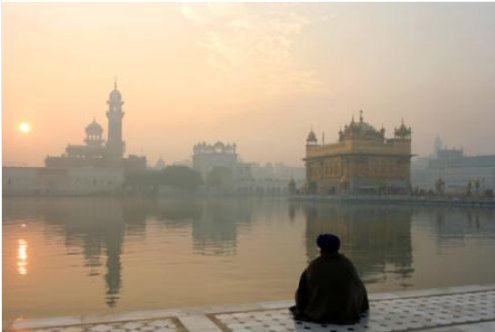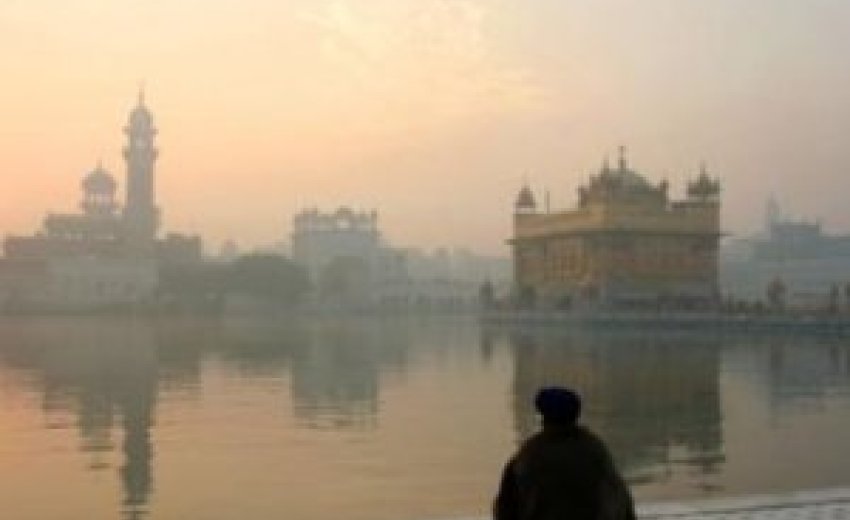Guru Nanak founded Sikhism more than 500 years ago. But his messages of universal love, equality and brotherhood are as valid today as they were then, discovers Reena Singh
Spiritual Guru of the Sikhs. Diplomat-at-large. Musician and poet. That's Guru Nanak for you.
The teachings of the 1469 AD-born religious founder of the Sikh faith have a universal and timeless appeal and are as relevant today as they were then — especially in times of communal strife.
The Guru endeared himself to both Hindus and Muslims of that era as he travelled across towns and villages preaching the message of truth, love and peace for over 25 years. His devoted and growing band of shishyas or disciples from both communities finally came to be known as the Sikhs (shishya in Sanskrit is sikh in Punjabi).
Today, November 21, is Guru Nanak's birthday — and Gurpurab is being celebrated by the 25-million-strong Sikh population across the world. It is a day when Sikhs visit gurudwaras for kirtan and community langars and listen to discourses on the life of Nanak and his teachings. At night, it is easy to spot Sikh homes all over the country as they are lit up with candles, diyas and sparkling electric lights just as on Deepavali.
 |
| (Thinkstock photos/Getty Images) Timeless message |
Celebrations worldwide
The celebrations in almost all gurudwaras in India and abroad follow the same pattern as in Amritsar's Golden Temple. "Sikhs celebrate Gurpurab with Akand Path, kirtan, jaloos, and langar," says Raghujit Singh Virk, senior vice president of the Shiromani Gurudwara Parbandhak Committee. "On an average, a lakh devotees visit Harmandir Sahib daily. On Gurpurab, this number is multiplied, but there is langar for everyone in the sangat," he says.
M S Randhawa, a retired World Bank official currently in Michigan, in the US, says: "I will attend the ardas at the gurudwara that will mark the end of the 48-hour recital of the Guru Granth Sahib before partaking of the festivities." Later, devotees will light candles at the gurudwara. "The houses here are wooden, and we can't light candles, at home," he rues. The Michigan Sikh community is small, but in California, as many as 50,000 Sikhs take out the jaloos with the traditional palanquin and Panch Piyaras that give a glimpse of the Sikh faith.
The Pakistan link
Guru Nanak's birthplace was in Sheikhupura district in Pakistan. He was born at his mother's parents' home or nanakey, and so was named Nanak Chand. A precocious child, he was more at home studying the scriptures of the Hindus and Muslims, than textbooks! His father would give him money for their trading business, but young Nanak would often spend it on feeding the poor and the hungry. He was 30 when his consciousness was awakened and he became enlightened leaving home in search of the eternal truth — by then, he was already the father of two sons.
Interestingly, some 300 Sikh shrines are now in Pakistan, including Nanakana and Punja Sahib. The Pakistan government allows Sikhs to visit the gurudwaras at Nanakana Sahib thrice a year. There is always a long list of people who queue up to visit the gurudwaras, despite stiff legal and visa formalities of the Pakistan government.
We are all one
The words of Guru Nanak's first-ever sermon was a fervent plea to rid hearts of animosity towards one another on the basis of religion. I shall put my heart at the feet of the one Supreme Being, For we are neither Hindus nor Mussalmans.
In his 1959 book, The Sikhs Today, Khushwant Singh describes the young Nanak as an intrepid traveler who travels as far east as Assam, down south to Ceylon, and as far west as Mecca-Medina, singing hymns that tell people that if they want to love God, they should learn first to love one another.
Nanak was accompanied on his travels by Mardana, a wandering Muslim minstrel of a low caste, and Bala, a Hindu peasant. The trio sang hymns that suggested answers to the major religious and social problems of the day. His crusade was, however, gentle — without anger, violence, or recrimination and was against fanaticism and intolerance. Nanak also opposed the meaningless rituals and discrimination against caste and sex that went by the name of religion in those days.
Sikhism, is in fact, an amalgamation and reconstruction of the true tenets of Islam and Hinduism and preaches universal humanism, truth and equality. Most important, it teaches that there is only One God.
By the end of his travels, the Guru had come to another conclusion — that people could be united better by a seer or sage who lived among them rather than by a religious head who lived in seclusion. And so it was that the last years of his life were spent once again with his family at Kartarpur, even as he addressed huge congregations, sang hymns and preached about a unified country.
There is an anecdote about his death in 1539, when his body became a subject of dispute between Hindus and Muslims. One community wanted to cremate him, and the other sought to bury him! It is not without reason that he is known as "Guru Nanak Shah Fakeer, Hindu ka Guru, Mussalman ka Peer".

